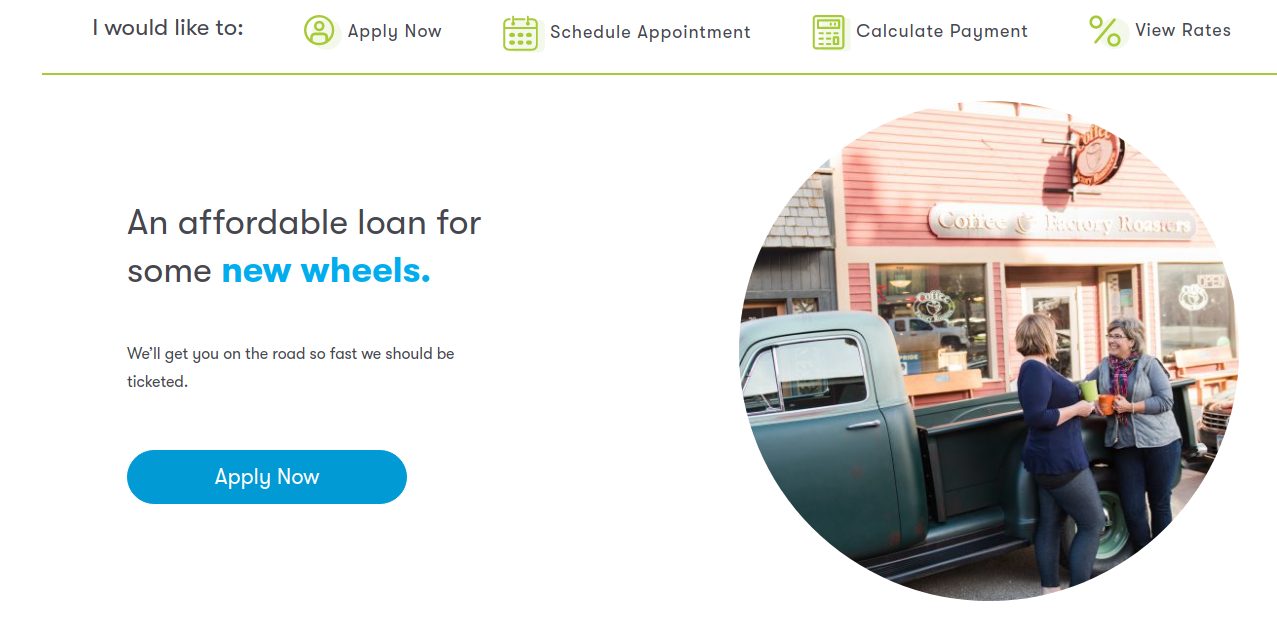
Many companies run two or more A/B tests a month. And when you look at the benefits, it’s not hard to see why that number is so high. While your gut feeling works great for some areas of life, your credit union website usually isn’t one of them. You’ll be much better off putting it to some honest tests.
What is A/B testing?
A/B testing is often referred to as split testing, because it involves showing different versions of a web page to visitors to determine which performs best. One version is the current site experience, and the other has some sort of modification.
For example, one version of your Auto Loans page might have a custom photo, whereas the other features a cheesy stock photo. Half your website traffic sees the original page (known as the control), and the other half sees the revised page (known as the variant). Then, the test measures visitor engagement on both versions, such as the number of people who started loan applications. Knowing which page does better statistically can help you make decisions for your website that increase conversions.

A custom photo on Limestonefederal.com
What should I test?
The beauty of A/B testing is that you can test just about anything. But make sure what you are testing makes sense for your website and your goals. Here are some of the commonly tested aspects of web pages.
- Headlines: Since your headline is the first thing a visitor sees when they land on your page, it’s pretty important real estate. A/B test fonts, size, color, and messaging to make sure you’re grabbing and keeping visitor’s attention.
- CTAs: CTAs are your most critical lever for driving conversions, so spend some time on this one. Test copy, placement, size, shape, color, and other factors to determine what improves performance. Remember to only test one element at a time.
- Forms: Nailing the form is critical for a credit union website. Test things such as the number of fields your form has and the format of those fields (i.e. checkbox vs. drop-down).
- Navigation: Navigation is key for a positive user experience. Visitors need to be able to easily make their way through your site, but the navigation bar shouldn’t distract from the rest of the page. Test elements such as color, position, and number of links.
- Copy: Test how in depth your content should go. Try different paragraph lengths, hard vs soft sell, adding statistics or anecdotes, etc.
- Images: Remember an image is worth a thousand words. Visitors pay attention to the types of images on your site. Test symbolic vs literal images, people vs objects, location of the image, size of the image, etc.
- Typography: Test Serif vs Sans Serif typefaces to see what works best for your site. Figure out what font size performs best. Test a few of the major fonts available. While these may seem like small changes, they can have a big impact on conversions.
- Page length: How long or short your page is largely depends on your product. According to Beem Digital, your page should be longer if you have a product that is complex, new to the market, or open to scrutiny. Shorter pages are fine for simpler and more familiar products.

A CTA on altanafcu.org
Why should I test?
By taking the time to A/B test on your credit union website, you’ll define the best experience for your visitors, and happy visitors lead to higher conversions. A/B testing allows you to continually improve the experience for your website visitors, and it’s a relatively cheap and easy way to do so. Take a look at some of the benefits.
- Increase conversions: Hopefully this benefit is pretty obvious. A/B testing makes it clear what versions of a web page perform best. You identify what messaging resonates and what elements solve visitor pain points so that they eventually convert.
- Increase engagement: By testing one element at a time, you can see what impacts user behavior. Visitors can get frustrated due to factors like confusing navigation or unclear CTAs, and A/B testing can help reduce these friction points so visitors actually engage with your site.
- Increase ROI from existing traffic: Rather than pouring money into gaining new traffic, focus on doing more with your existing traffic. A/B testing helps you identify improvements that lead to increased conversions from your current visitors.
- Decrease bounce rate: By testing different elements on your site, you can find the right combination that keeps visitors on the page. The longer they are on the page, the higher chance you have of providing them with value through your content and the better chance they have of converting.
- Reduce risk: Rather than going all-in on an expensive and time-intensive change to your website, test first and then make an informed decision on whether you should fully implement it. Save yourself from potentially costly mistakes and some major headaches by eliminating the guesswork.
- Easy to analyze: The results from A/B testing are simple to analyze, as the metrics are fairly straightforward and clearly indicate the winning and losing versions.
- Quick to conduct: You can get answers quickly, since even a relatively small sample size can produce significant results.
- Develop a culture of experimentation: Believe it or not, A/B testing can impact your company culture, as it can foster an experimentation culture. More employees’ ideas will see the light of day instead of being casually dismissed. People can speak more about actionable results and less about abstract ideas.
Instead of relying on the smartest (or most vocal) person in the room and risking costly and ineffective website changes, test and trust the data. You’ll be on your way to creating a winning website to grow your credit union.
